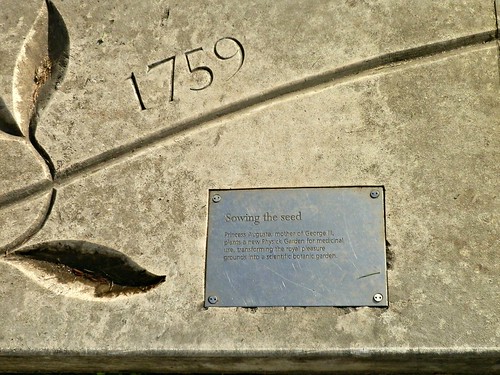
If the Royal Botanic Gardens, Kew, London, is on your bucket list and you've never visited before, that's good news and bad news.
The good news: It's well worth the trip and the visit.
The bad news? You won't have enough time to see it all. A person could visit Kew every day for a year and still find something new. Covering 132 hectares (326 acres), Kew's beginnings as a botanical garden date to 1759, when Princess Augusta, mother of King George III, started developing a small (3.6 hectares) scientific botanic garden. In 2003, Kew Gardens was put on the Unesco World Heritage list.
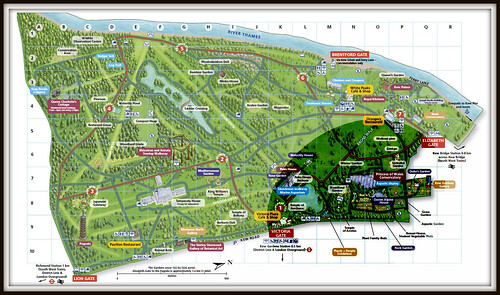
When my family traveled to London last October to visit my daughter who was studying there, Kew was definitely one of the highlights. But we had only a few hours for the tour. Consequently, we saw just one tiny corner of the botanic garden (roughly emphasized in the lower right, northeast, corner of the map above). Now, of course, I must go back someday!

We lucked out the day of our visit--the sky was partly cloudy, with enough sun to keep us warm, but not too much brightness to wash out the color. We entered the gardens at the Victoria Gate, and one of the first things we saw was the Palm House across from the Palm House Pond--a remnant of Kew's original lake.
I knew Kew was big, and I knew we had limited time. And because it was such a lovely day, we headed toward the northeast corner--my guess for areas of particular personal interest.
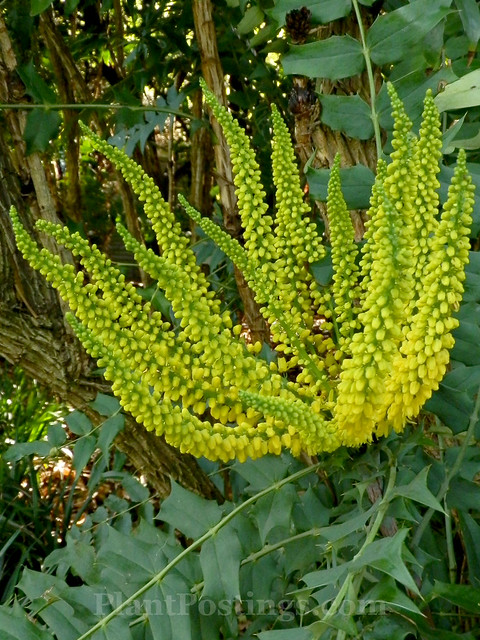
One of the first plants that caught my eye was this lovely specimen Mahonia plant. I believe it was a hybrid (Mahonia x media).
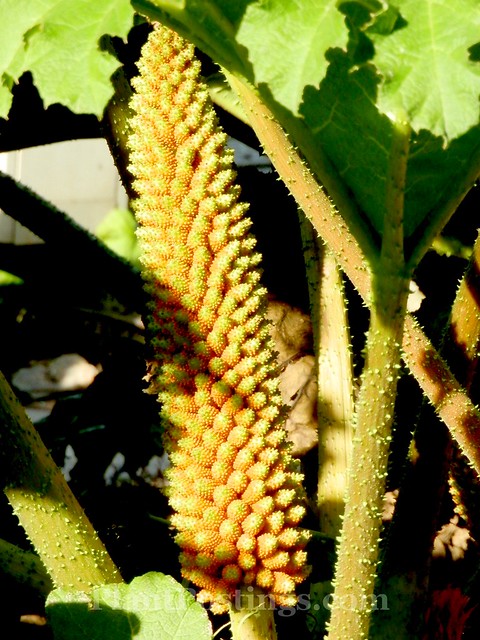
Nearby was a dramatic patch of Chile Rhubarb (Gunnera manicata).
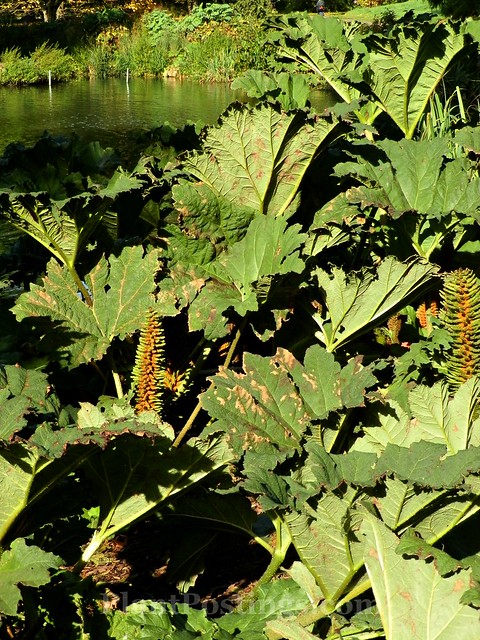
Although not at its peak, I'm showing this rambling photo so you can see how large the foliage was and how large the patch of Gunnera. It was a commanding presence at the shore of the pond.
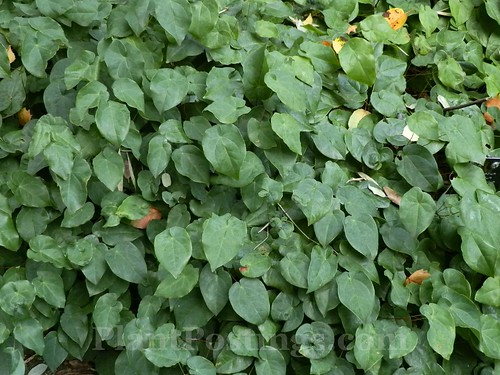
From the Palm House Pond, we headed toward the Woodland Garden. Barrenworts (Epimedium spp.) of various species lined the path, providing plentiful groundcover throughout the wooded sections of Kew.
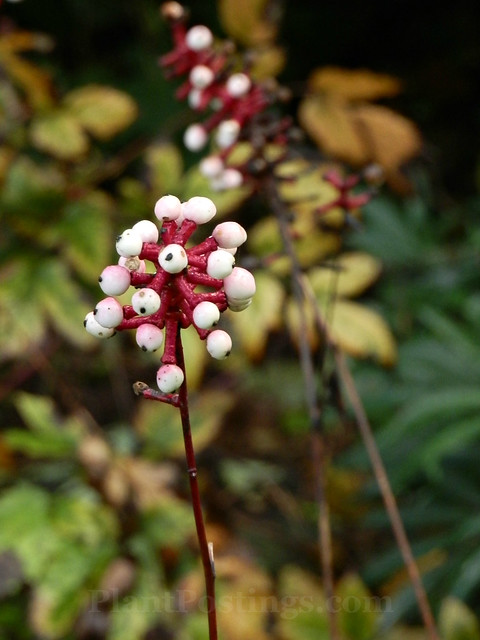
In the Woodland Garden, I was surprised to see many North American native plants I was familiar with, among other plants of interest. One example was White Baneberry (Actaea alba).
Other woodland plants included:
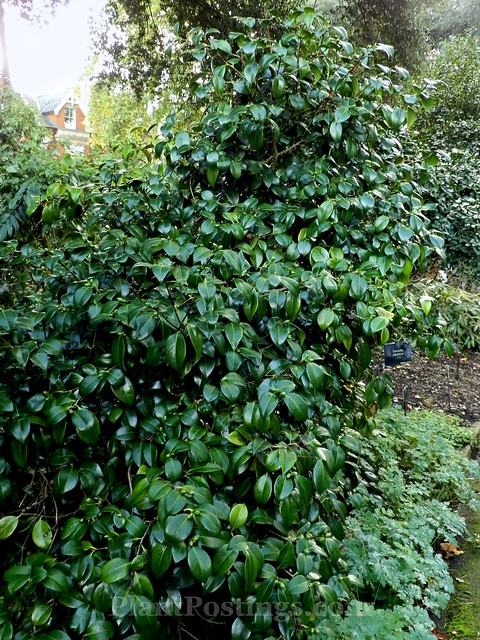
Large hedgerows of Camellias (C. japonica);
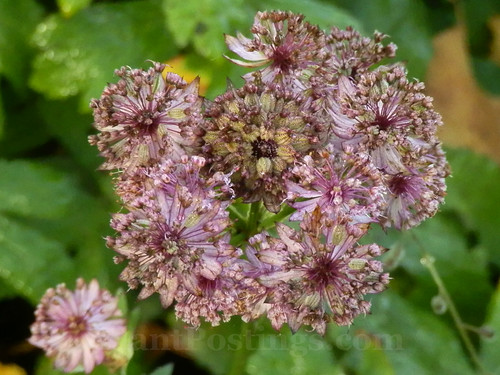
Masterwort (Astrantia major 'Rubra');
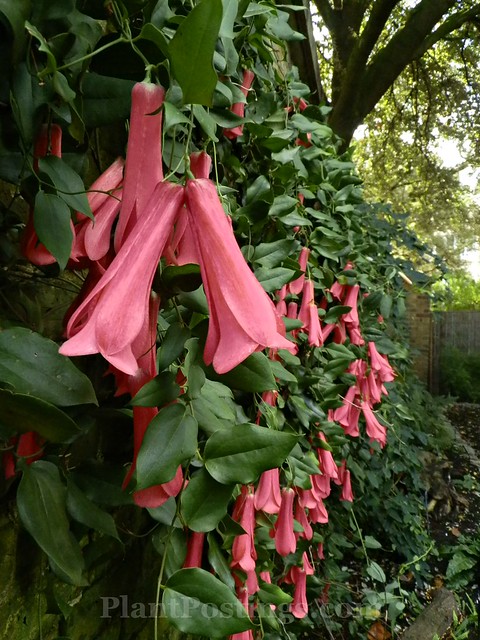
And a lovely wall lined with Chilean Bell Flowers (Lapageria rosea).
Somewhere between the woodland garden and the plant family beds, were assorted other curious and beautiful plants, including:
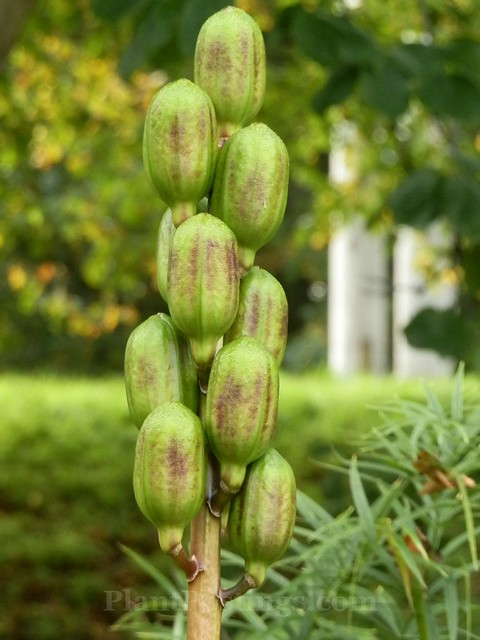
Giant Lilies (Cardiocrinum giganteum var. yunnanense) which had formed commanding seedheads;
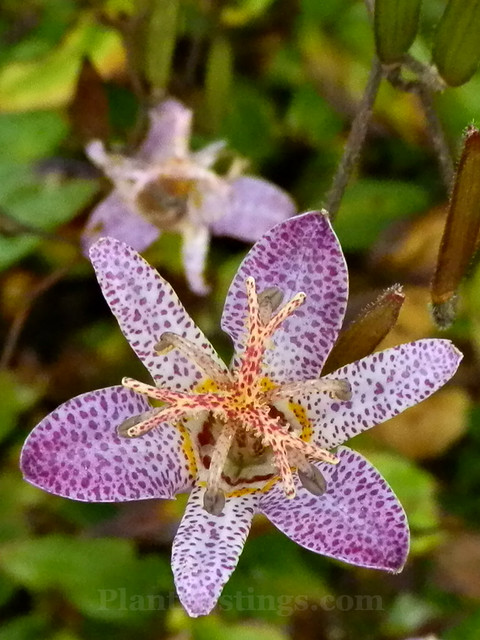
Toad Lilies (Tricyrtis formosana);
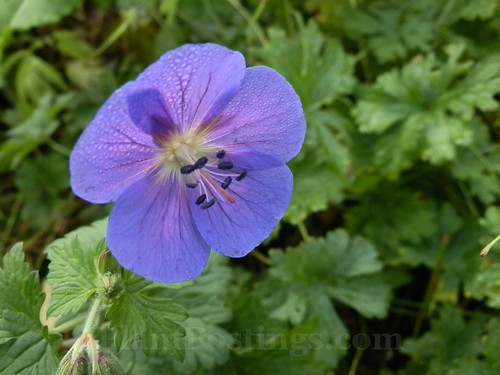
Various Geraniums, including this stunning beauty from the Himalayas (Geranium himalayense);
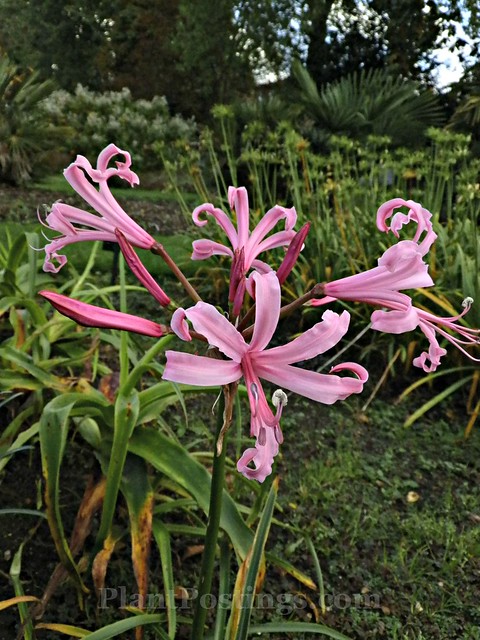
And Cape Lilies (Nerine bowdenii 'Mark Fenwick').

Throughout Kew, there were numerous statuaries, including this bronze of a young farmer, titled, "Out in the Fields."
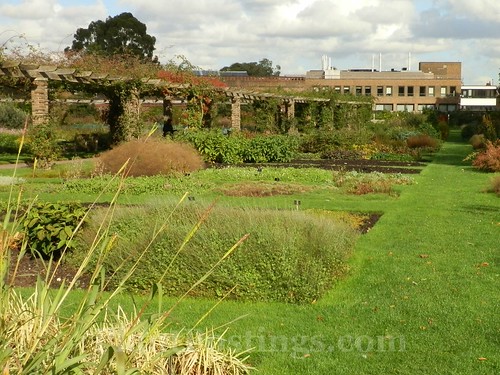
A particularly fascinating section of Kew, for me, was the Plant Family Beds--originally a kitchen garden that supplied produce for the royals. Today, the plants in this section are grouped together in families, with information about those families, and genuses and species. It's a botanist's paradise. I could have spend the entire day (or more) in this section, alone.
Just a small sampling of the huge selection of plants here:

Knotgrass (Polygonum coriaceum);

And 'Orange Crest' Trollius (T. X cultorum).
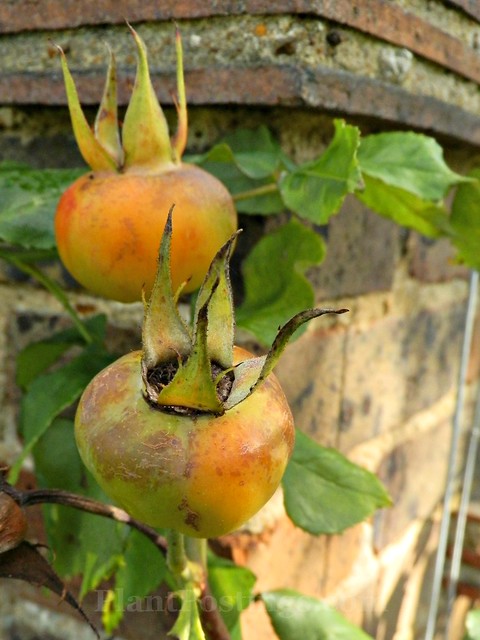
Down the middle of the Plant Family Beds was the Rose Pergola--which I can only imagine must be stunning in late spring and summer. It was lovely in autumn, too, and I saw some of the largest Rose hips I've ever seen. I may be exaggerating, but I remember these being the size of small apples--like two inches in diameter. I believe this particular Rose was 'Paul's Lemon Pillar,' if my photo records are correct.

Next, we travelled through the Bonsai House. It always amazes me to see common trees I'm familiar with grown as miniatures in such an artful way.

We decided to eat lunch at the Orangery Restaurant, which turned out to be an excellent choice. The food was fresh, delicious, and reasonably priced. Plus, the building, constructed in 1761, previously was actually a hothouse for growing citrus plants. As a restaurant, it was a bright, cheerful, light-filled refreshment stop, with great views out onto the gardens.
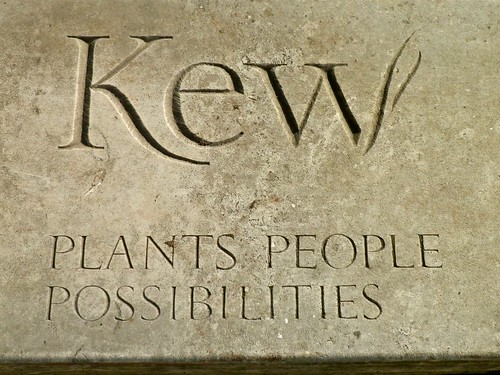
Outside the Orangery we saw the timeline showing key highlights of Kew's history, including this sign and the stone shown at the beginning of this post, among others.
Along the paths between the Orangery and surrounding garden areas were unique tree species, including:

The Monkey Puzzle tree (Araucaria araucana);
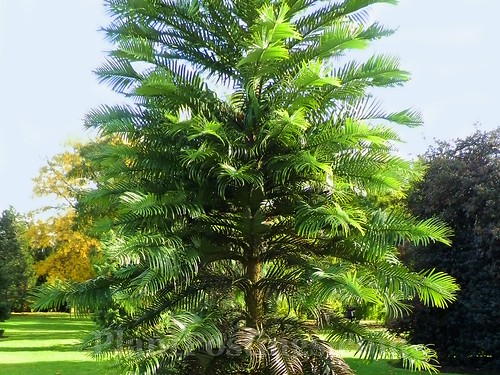
And this Wollemi Pine (Wollemia nobilis), planted by Prince Philip to commemorate Kew's 250th anniversary in 2009.
After lunch, we spent some time in the Grass Garden, which I profiled shortly after our trip last year. (You can click on the link for that post.)
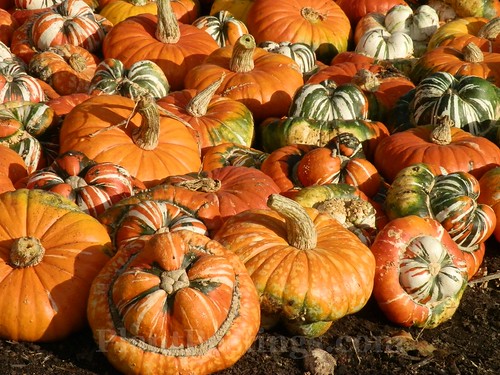
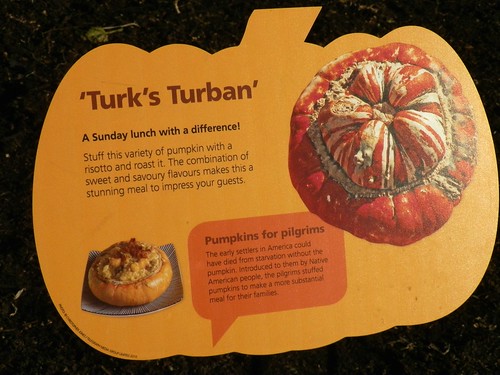
It was fun to see seasonal produce that had grown at Kew on display, with educational information for children and adults. The theme last fall was "IncrEdibles: A Voyage Through Autumn's Edible Delights."
We finished out the day winding through the Secluded Garden, the Duke's Garden, and other sections on our way back to the Victoria gate to catch The Tube back to our hotel. Here are a few of the lovelies that greeted us:
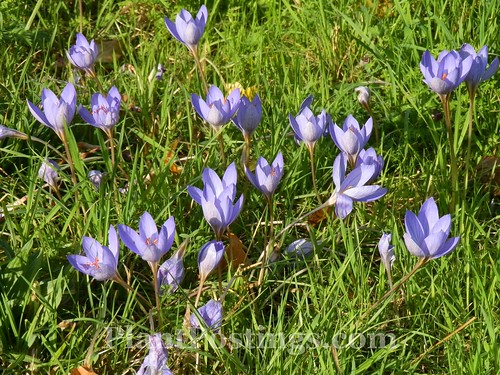
Autumn Crocuses (Colchicum spp.);
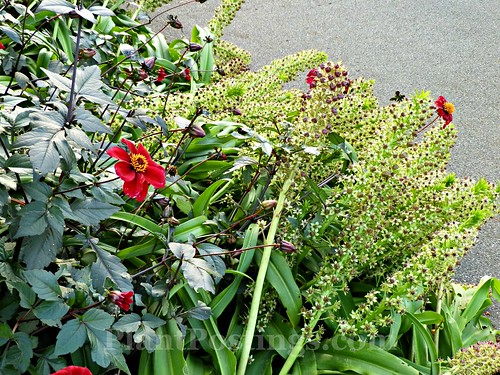
A lovely combination of Dahlias (hybrid unknown) and Pineapple Lilies (Eucomis comosa);
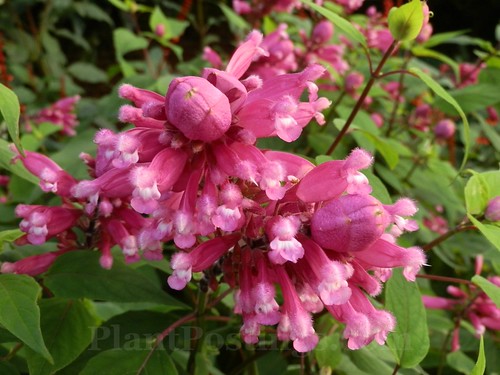
Rose Leaf Sage (Salvia infolucrata 'Bethellii'), which I seem to remember being popular with the pollinators;
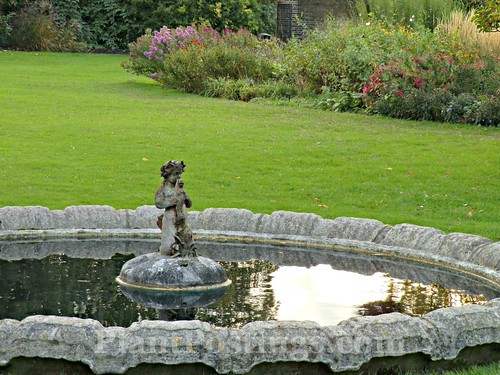
A beautiful little statuary in a pond;
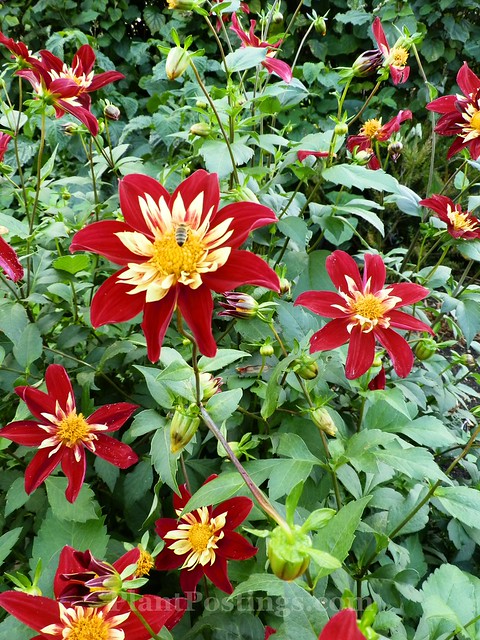
More incredibly vibrant hybrid Dahlias;
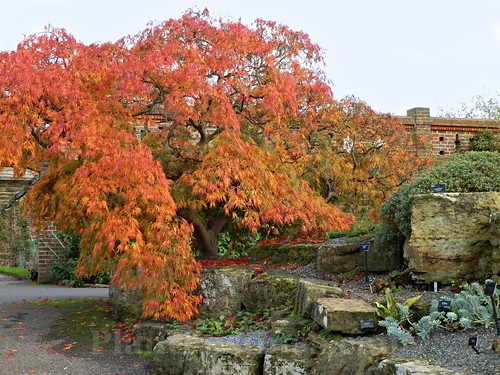
A majestic Japanese Maple (Acer palmitum) at peak color;
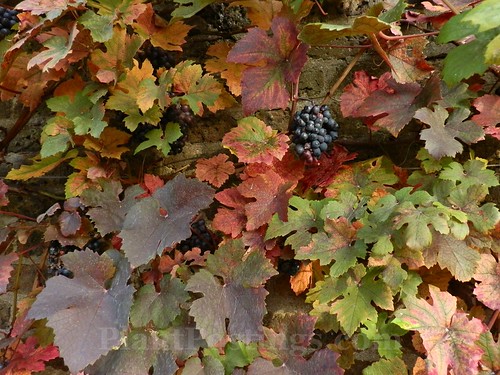
And a stunning wall of grapevines that looked luscious and tasty (we did not sample them, but they looked fabulous).
I didn't post about this visit until now for various reasons. But the timing seems right for the season. Looking back at these photos has me nostalgic: I do hope I can get back to Kew at some point.
Beautiful post! I love the pictures - such wonderful colours and textures. Mahonia media is one of my all-time favourites. I have Mahonia media "Charity" in my garden and it's great value for insects.
ReplyDeleteIt's funny you have managed to come all the way from America to see Kew and yet I have never been. One day!
Best wishes :)
Thanks! Lucky you to have Mahonia in your garden! When we found out our daughter would be studying in London, I thought of Kew right away. And then several garden bloggers and gardeners mentioned it as a "must see," as well. The only problem is that it's so huge. I felt a little cheated that I couldn't see it all. But I loved it!!!
DeleteWow. What a great post! So many ideas and inspirations.
ReplyDeleteAlso, I was just in the Netherlands and Germany and it's interesting to see some of the same plants show up in gardens over there (that are less frequently used here in the States in gardens I've visited).
For example, I saw some great patches of Epimediums in other European gardens, plus dahlias seem to be highly favored there. (I think the one unknown hybrid you featured might have been Bishop of Llandaff - https://www.rhs.org.uk/plants/details?plantid=621 - which I saw in the Netherlands.)
I hope to visit Kew next summer. If so, it will be fun to compare pics taken at different times of the year!
PS - Oh I how wish it were just a little warmer here in the winters so that I could have camellia hedgerows!!
Thanks, Aaron. I delayed this post for a year mainly because I needed to get organized after the trip. And then posting about Kew in autumn just didn't seem right in winter, spring, or summer. So, voila. You're probably right about the Dahlias. That was one of the ones I was going to guess, but I neglected to photograph the plant label on that one for a positive ID. I have a few Epimediums in my garden, even though they aren't native. They're in a confined area. I just love them!! You will love Kew--any time of year, I'm sure. Jealous. ;-)
DeleteKew is an amazing place, isn't it? You said you had limited time, but it looks to me like you captured the magnificence of the collection well--absolutely gorgeous photos! I've been a couple of times, fortunately, and would love to visit again. I think it would take many, many visits to see all there is to see. Thanks for the lovely trip!
ReplyDeleteYes, yes, yes. It's more stunning than I had imagined! Thanks for your kind comments. This might sound weird, but I imagined myself living in Kew Gardens or at least living nearby. It was so wonderful. I do hope to get back someday--there were so many parts we didn't see, and I'd like to get back to the Plant Families Beds/Rose Pergola area in spring or summer! It must be simply breathtaking!
DeleteWhat a great post Beth. I enjoyed every bit of it and it must have been great for you to reminisce about your trip.
ReplyDeleteOur Botanical Gardens here in Edinburgh are a mere fraction of the size of Kew, 70 acres, but a place just as beautiful! Thanks for posting.
Thank you, Angie. Yes, it was fun to reminisce. :) If money were no object, I would go back very soon, that's for sure. I think Kew in about late April through August must be absolutely stunning! It was lovely in October, too. My daughter spent some time in Scotland, as well, and said it was the prettiest countryside she's ever seen. She shared some photos, and the views were absolutely stunning!
DeleteI love visiting Kew and I have spent there over the years 3 times one day, but it is never enough, so much to see.
ReplyDeleteThis is a great post and I enjoyed every bit of it. The Lapageria rosea is a special beauty and the Cardiocrinum very desirable, but the bulbs are very expensive here.
Thank you for sharing this with us.
Yes, I believe it would never be enough. We have many wonderful botanical gardens here in the states, as well. But Kew is so far away for me, so the number of times I'll be able to visit is limited. That makes it especially precious. I'm imagining the Roses must be so beautiful in the spring and summer--although some were still blooming in the fall, and the hips were lovely (and large), too. Thank you for your kind comments. :)
DeleteI enjoyed this post, Beth! I was there in May 2013. You are right, it's a very big place, and I remember running fast! Thanks for the pictures of the plants which I didn't see in May!
ReplyDeleteThank you, Tatyana. Unfortunately (or maybe fortunately) I was having foot issues that day, which kept me from running. The amazing gardens took my mind off my sore feet (from walking around London so much on inappropriate shoes). Also, perhaps it was a blessing in disguise that I really had to savor the small area that we chose to visit. May must be a breathtaking time to visit Kew!
DeleteI'm headed back to England in summer 2016 and want to visit Kew since I'll be outside London. It's looks like mecca for a gardener. :o)
ReplyDeleteLucky you! Yes, a mecca for gardeners is a good way to put it. It felt like i had arrived at "home." What an incredible resource for visitors from around the world!
DeleteWow, that is one giant garden! They must have quite a lot of staff for all that! What a treasure. I would just love to visit sometime. What a hard decision that must be to choose which sections to visit! Lovely.
ReplyDeleteYes, we noticed many workers while we were there. One of the things I enjoyed most, though, was the organized but friendly feel of the place. Not everything was in neat, perfect order. I don't like that kind of meticulous, sterile garden. But it wasn't messy--just approachable and incredibly beautiful. It was a tough choice to decide what parts to visit!
DeleteThis is on my bucket list, too, but maybe I should put it on there twice because of its size:) What a fantastic visit this must have been! I like to do the same thing you did--when I have limited time, I check out what areas I'm most interested in and head for those first. The plant families section sounds interesting, and seeing the native plants of the UK would be fascinating as well. Your timing is great--seeing the garden in the fall is perfect!
ReplyDeleteYou'll need at least two visits to start! ;-) There were plants from around the world (as is the case with many botanical gardens). But it was interesting to see some familiar N. American plants, and to realize they were transplants from the U.S. Fall was a great time to visit, but I imagine spring and summer would be amazing there, too! Thanks, Rose!
Deletethat Chilean bell flower ... is spectacular!
ReplyDeleteI've been to Kew twice, but also just a corner each time.
Chelsea Physic garden is another interesting one, and not so HUGE.
Now I am eagerly anticipating being able to just casually visit Kirstenbosch ... whenever I feel like it!
Yes, I was surprised when we turned a corner and saw that incredible wall of bell-shaped, rose-colored beauties. Part of the joy of Kew is the magical ways plants are arranged. I would never grow tired of it. I'll have to check out Chelsea if I ever get back to London again. And Kirstenbosch, if I ever make it to South Africa. Now that would be a fantastic trip!
DeleteThe rose hips looked almost big enough to be medlars. We did Kew, the Chelsea flower show, & the Chelsea Physic Garden all in one long, very botanical weekend.
ReplyDeleteYes, the rose hips were huge. Maybe it's common for Kew, but it sure wasn't common for me. I did a double-take, wondering if they were apples or some other fruit I wasn't familiar with, but no they were marked and they were rose hips. Amazing. Your trip to Kew and Chelsea sounds wonderful, but perhaps tiring. A great opportunity, though!
DeleteHi Beth, it is years since I went to Kew, I'd forgotten how vast it is! Its good to see more photos of your visit there, I too grow mahonia, a lovely plant until you accidentally brush against it while trying to weed... I hope you get to go back and explore some more. I hope I do too!
ReplyDeleteIt would be fun to meet in the U.K. sometime--or if you ever visit the states! Lucky you to have Mahonia! I've long enjoyed its unique shape. It doesn't seem appropriate for my garden, but I love to see it at other people's gardens or botanical gardens.
DeleteWhat a fabulous post Beth. Much to my shame, I've only been to Kew once and also on a way too short visit. Your beautiful pictures make me yearn to go back. Cardiocrinum is something I really want to try here when I get as far as the woodland borders, it needs a bit of space, but it would be fantastic to be able to grow it.
ReplyDeleteLoved your autumn colour in the previous post too..
Thanks! It's closer for you, so I hope you have a chance to visit. The Cardiocrinum has a commanding presence--whether it's blooming or seeding! It would be fun to visit the same areas again in the spring or summer, but then I want to see the rest of Kew, too!
DeleteThis would definitely be on my list of places to visit. Thanks for the virtual tour!
ReplyDeleteYou'd enjoy it, Heather! It seems like just about anything will grow in the London area. They don't get terribly hot in the summer, and not much below freezing in the winter (at least that's my understanding). Anyway, they can grow so many more plants than we can because of our extremes and nasty winters. Anyway, I hope you can visit Kew someday, too. :)
DeleteA lovely trip round Kew. I love to go at different seasons, whenever you go, there is always something to see. I' m crazy about the Lapageria rosea, isn' t it gorgeous? I didn' t think it was hardy, it must be a very sheltered spot.
ReplyDeleteThanks, Chloris! Other people have mentioned that, too--that there's always something new and different to see. Oh my gosh, the Lapagerias were stunning! And it was such a treat to come round a corner and see them so artfully draped along the wall--just gorgeous! Apparently, it's hardy to zone 9--which is London's zone. It was in a protected area, though.
DeleteThat is a problem with so many great public gardens - you need about a week just to get a sense of what they have! I can't imagine seeing the Chicago Botanic Garden in just a few hours, and it is about the same size as Kew. We were in London for a couple of days last year and and didn't get to Kew at all. Guess that means we need to go back.
ReplyDeleteAbsolutely! I never feel like I have enough time in a botanical garden. I didn't realize the Chicago Botanic Garden was the same size as Kew. Yes, I think Kew needs to go on the "repeat bucket list." ;-)
DeleteWhat a great post! I am looking forward to seeing Kew someday and your post has heightened my desire!
ReplyDeleteThanks! Yes, I think all gardeners and garden bloggers would enjoy Kew. I know I was going to like it, but it exceeded my expectations.
DeleteWhat a fun post. I've never traveled across the pond but if I ever do, Kew will be a must-see. I have to admire the princess for her wisdom all those years ago. I bet she would be thrilled to see how her gardens have evolved. I love that Chilean Bell Flower. Wowzers.
ReplyDeleteHi Grace: Sometimes I forget to head back and reply to later comments, so I'm catching up now. Thanks for your comment! Yes, Kew is a must if you're ever in London--it's really easy to get to on the "tube." The Chilean Bell Flowers along the wall were, indeed, stunning!
DeleteDefinitely on my list when I get to the UK someday and do a month of garden tours. Or maybe a month in this garden touring...
ReplyDeleteYes, I could easily see spending a month in Kew, alone! ;-) But a month of UK garden tours would be fabulous!
DeleteI'm so glad you enjoyed your visit to Kew, it's such a beautiful place isn't it. I guess I'm rather lucky as I only live a short drive from it and have been visiting for many years now so have managed to see most of what's there. Saying that though, you always miss something on a visit, many times I never manage to get all the way around. If you get a chance to go in Spring it is just glorious!
ReplyDeleteLucky you to live so close! I do hope to see it in springtime or summer someday. The Roses, alone, must be incredible!
Delete